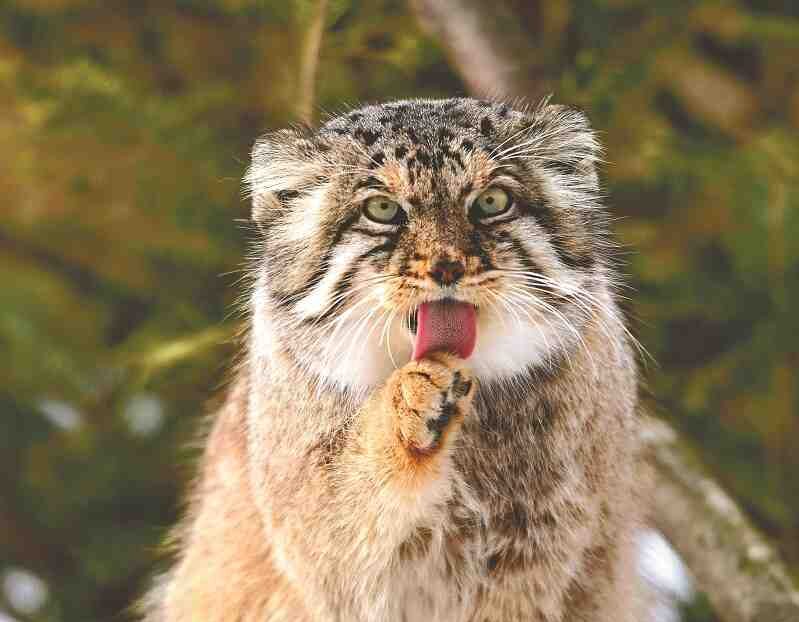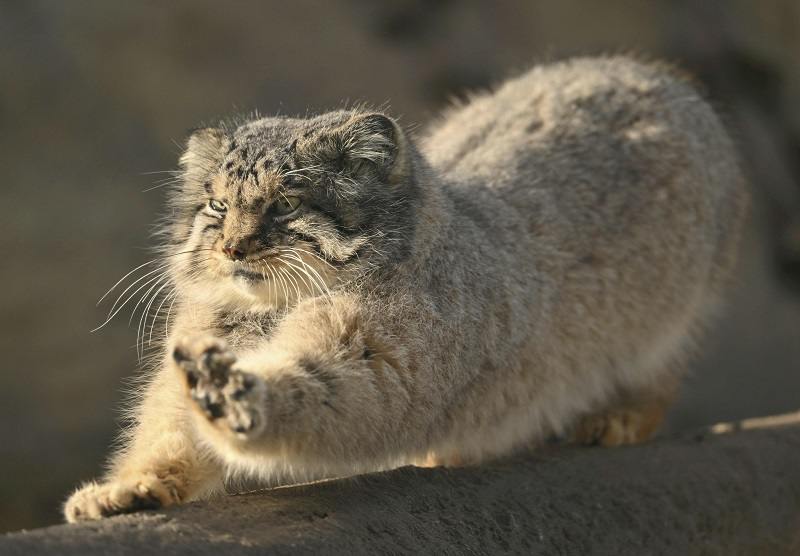
As two reporters from Yomiuri Shimbun, we share a deep love for cats. Their presence brings us immense comfort, but our busy schedules often deprive us of this luxury. Thus, we make it a priority to seek out unique and special feline friends whenever possible. Our latest discovery is the Pallas’s cat – an ancient species believed to be the oldest in the cat family.
Following the Japanese adage that the best day to start a project, we set off to Nasu Animal Kingdom in Tochigi Prefecture, where two Pallas’s cats reside. Bol, a seven-year-old male born in a Japanese zoo, and Polly, a six-year-old female from a Swedish zoo, immediately captured our attention. Their distinctive appearance comes from their expressive eyes, flat faces, and thick fur.
Videos of their facial expressions and peculiar hunting methods have gone viral, catapulting their fame even further. Upon our arrival, Bol sat on a stump, staring at us with his powerful and round pupils. Unlike common domestic cats, Pallas’s cats have unique, human-like expressions due to their round pupils. However, it remains unknown whether this trait provides them with any survival advantage in the wild.
For us, being in the company of Pallas’s cats was a rare treat that filled us with joy and admiration.

Meet Polly, the Pallas’ cat who loves taking a stroll on the snow. She and her friend Bol were seen approaching visitors at the facility they call home. Pallas’ cats have a thick winter coat since they originate from Central Asia where they endure harsh weather conditions. Being perfectly adapted to the cold Japanese winter, these cats maintain their wild nature at the facility. They move like they do when they hunt, displaying their characteristic behavior and wild demeanor. Even though they’re undeniably cute, Pallas’ cats make menacing hisses instead of meowing, except during mating season where males may occasionally emit a meow.

Bol, the Pallas’s cat, lazily extends his body while keeping an eye on the approaching crowd. It’s not easy to get cuddles from him due to his sharp claws and defensive instincts. If one wishes to get near him, it’s best to carry a shield as a safety measure. Observing these cats while eating is quite fascinating as they consume horsemeat with intense fervor. Clearly, these felines deserve nothing less than utmost respect.

The Pallas’s cat has faced numerous challenges in the past, specifically a significant decline in population caused by the hunting of its fur. It was even placed on the Red List of the International Union for Conservation of Nature as a near-threatened species. But the good news is that conservation efforts have made a positive impact, resulting in their reclassification as a species of “least concern” on the list.

In Japan, there are 16 Pallas’s cats that are currently housed in zoos and animal parks. These places have acknowledged their previous errors and are now taking measures to safeguard these felines, who live in high-altitude areas and can be easily affected by infectious ailments. Despite their perceived standoffishness and guarded behavior, the cats at these facilities exhibited a curious and playful demeanor as they approached the glass enclosures to explore and frolic.

Getting a closer look at these felines allowed us to appreciate their distinct facial expressions and movements. These creatures are definitely more than just adorable – they are captivating beings that require safeguarding. As we departed from the park, our resolution to aid in their preservation was revitalized, and we eagerly looked forward to seeing them again.
